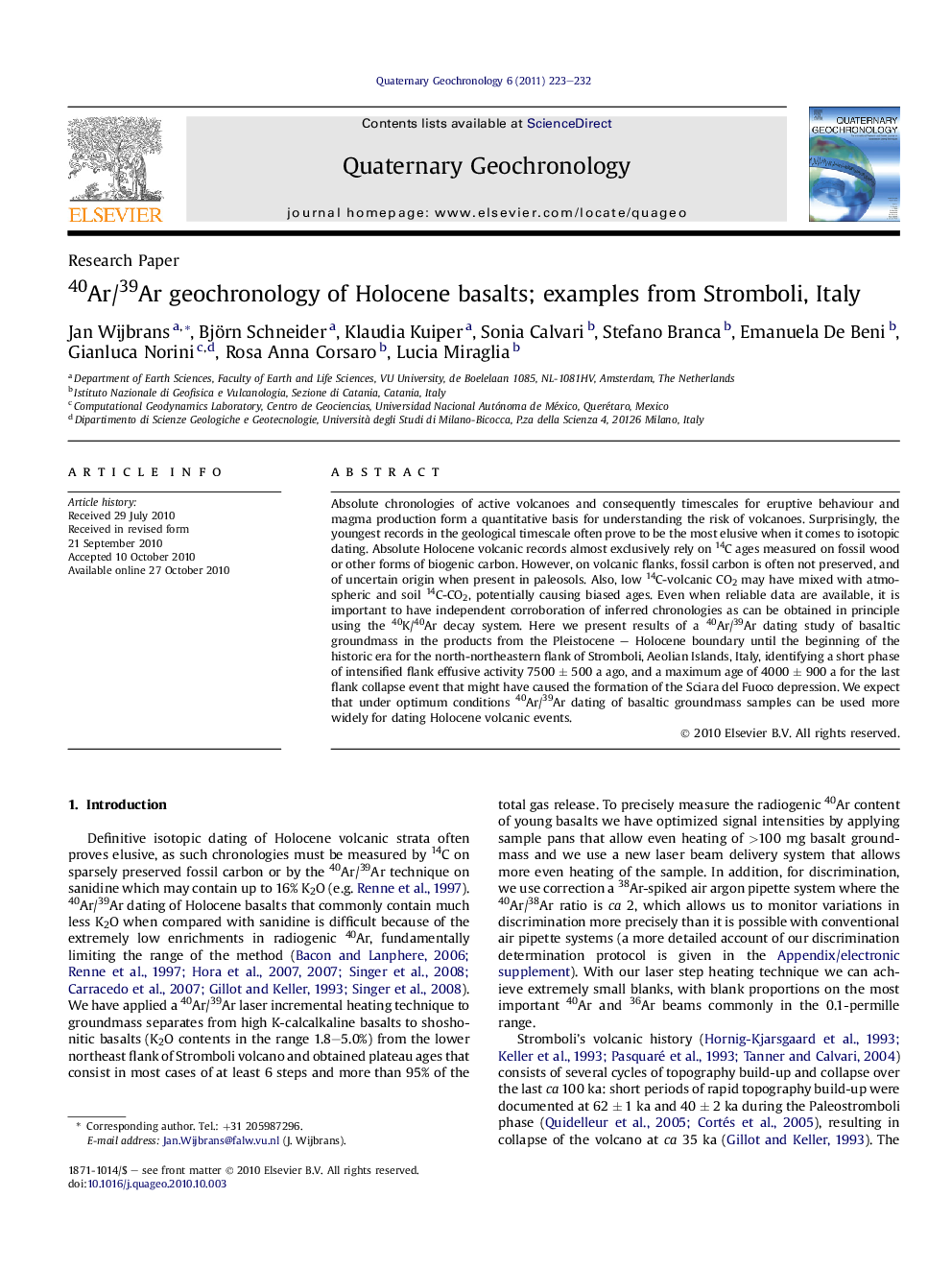| Article ID | Journal | Published Year | Pages | File Type |
|---|---|---|---|---|
| 4725362 | Quaternary Geochronology | 2011 | 10 Pages |
Absolute chronologies of active volcanoes and consequently timescales for eruptive behaviour and magma production form a quantitative basis for understanding the risk of volcanoes. Surprisingly, the youngest records in the geological timescale often prove to be the most elusive when it comes to isotopic dating. Absolute Holocene volcanic records almost exclusively rely on 14C ages measured on fossil wood or other forms of biogenic carbon. However, on volcanic flanks, fossil carbon is often not preserved, and of uncertain origin when present in paleosols. Also, low 14C-volcanic CO2 may have mixed with atmospheric and soil 14C-CO2, potentially causing biased ages. Even when reliable data are available, it is important to have independent corroboration of inferred chronologies as can be obtained in principle using the 40K/40Ar decay system. Here we present results of a 40Ar/39Ar dating study of basaltic groundmass in the products from the Pleistocene – Holocene boundary until the beginning of the historic era for the north-northeastern flank of Stromboli, Aeolian Islands, Italy, identifying a short phase of intensified flank effusive activity 7500 ± 500 a ago, and a maximum age of 4000 ± 900 a for the last flank collapse event that might have caused the formation of the Sciara del Fuoco depression. We expect that under optimum conditions 40Ar/39Ar dating of basaltic groundmass samples can be used more widely for dating Holocene volcanic events.
